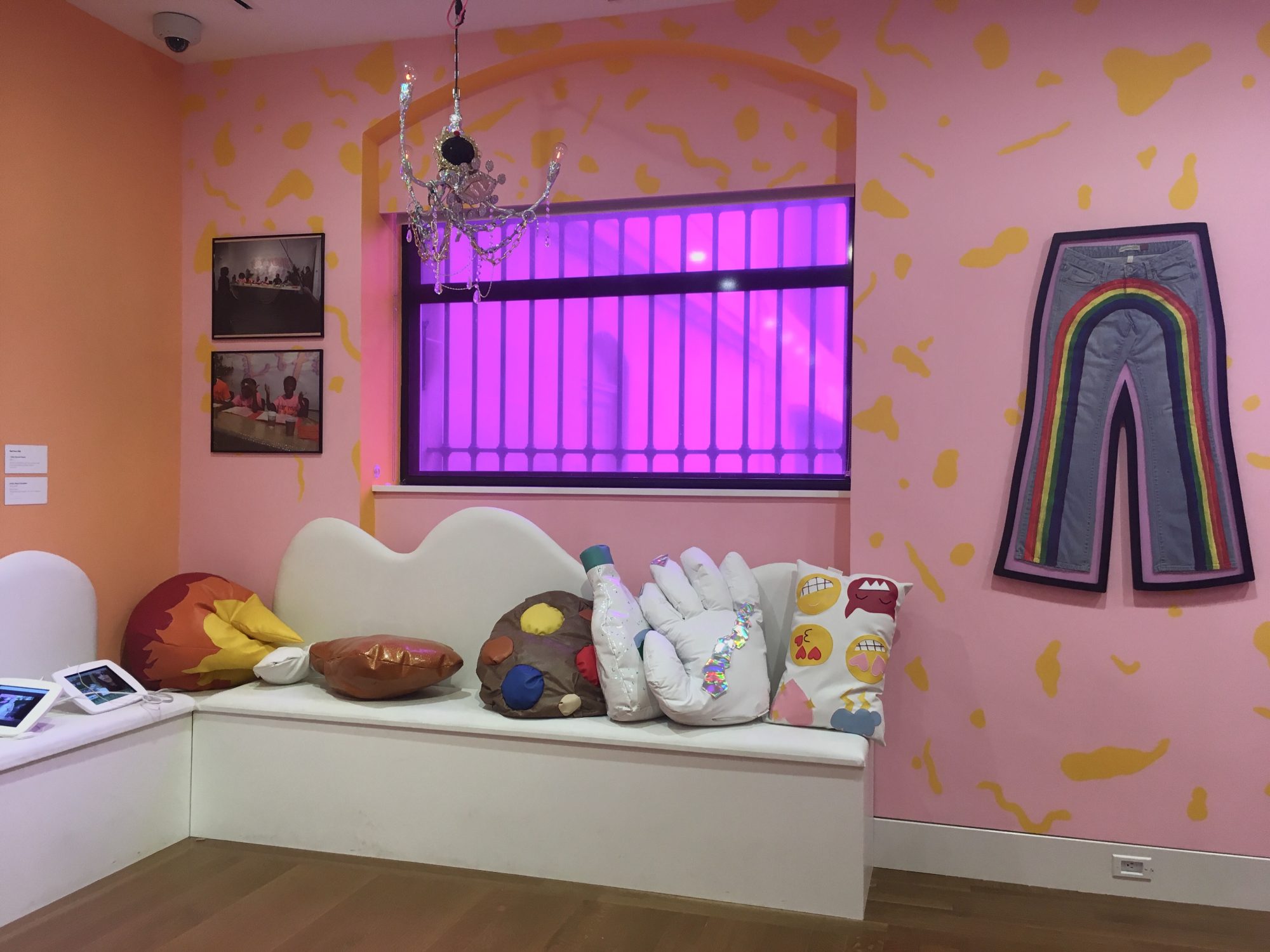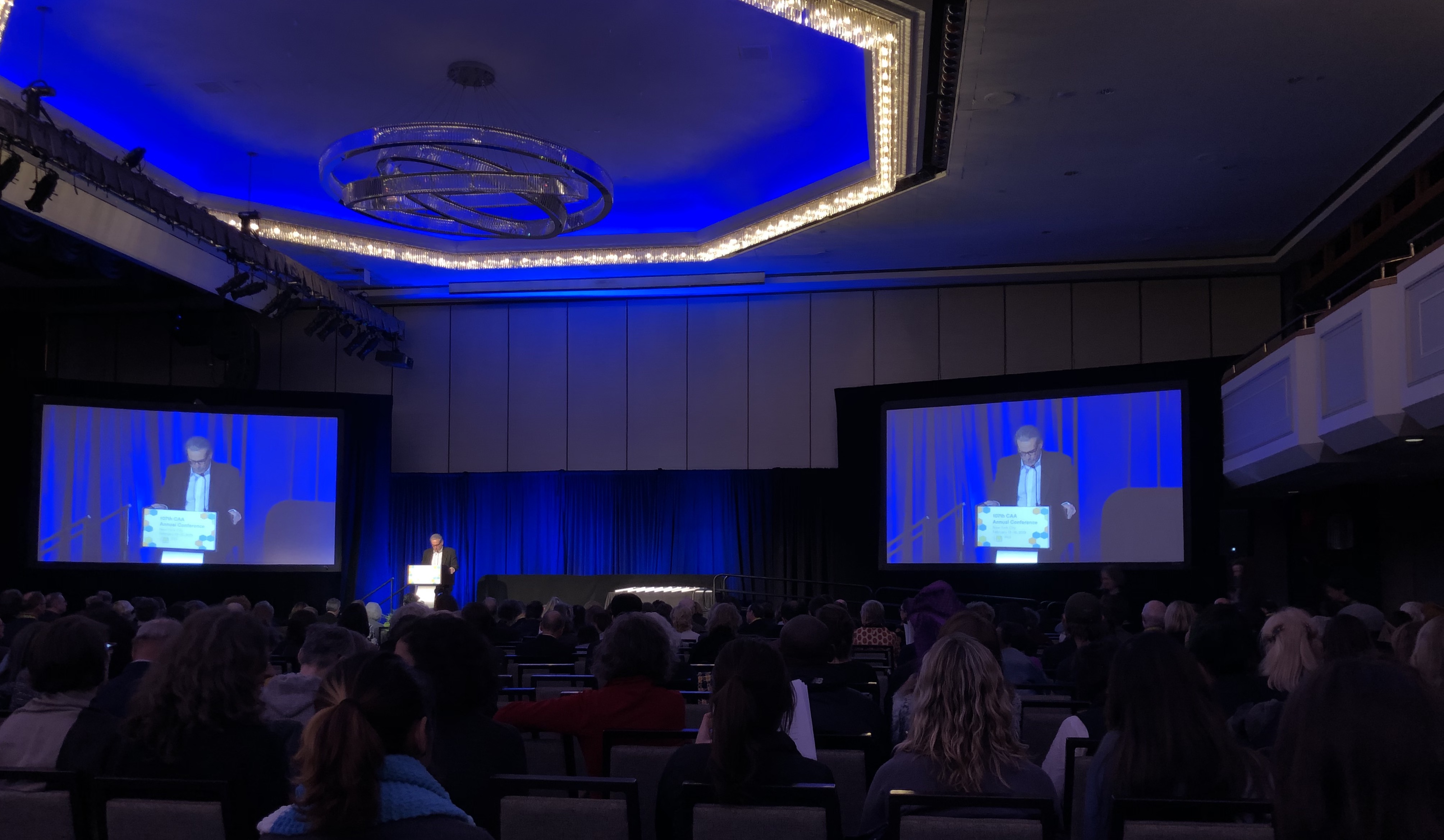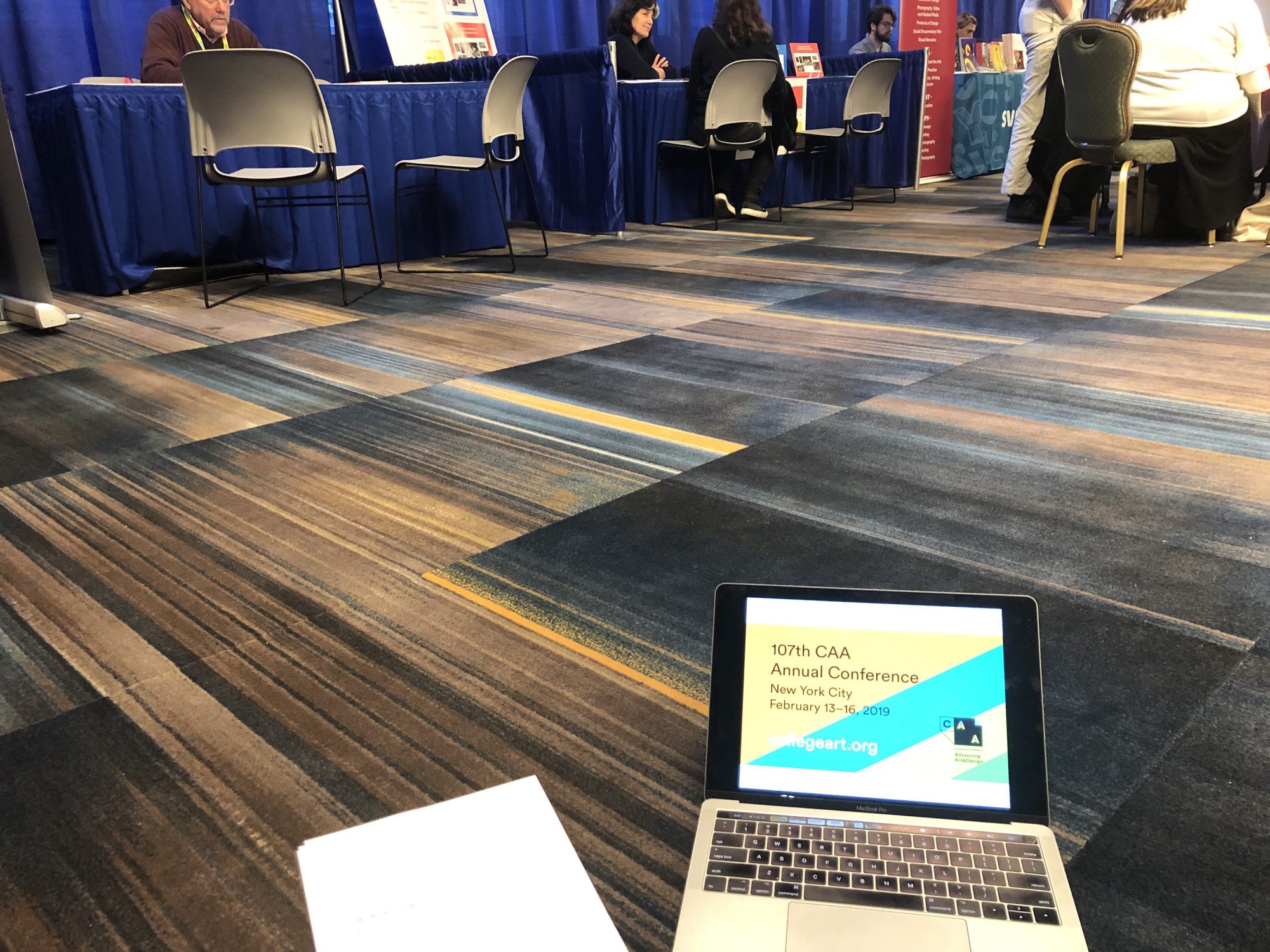Keeping Hydrated, Watching Out for the “Art History Vipers,” and Loving Joyce J. Scott’s Keynote at CAA’s 2019 NY Conference
Every two years, museum professionals and professors of art history and studio art gather from all corners of the globe at the College Art Association’s New York City conference for four days of fellowship, conversation, and exchange in New York. (The conference is held in Chicago in the intervening years when it’s not in Manhattan.) Last week, scattered throughout the New York Hilton Midtown’s extensive (and rather dated) conference facilities were art professors sitting around tables, chatting in clusters, and lying on the floor charging their devices.
Identifiable both by severe haircuts and statement jewelry, conference attendees included some of the most notable names in the field today–like featured speakers Julie Mehretu with Julia Bryan-Wilson, Joyce J. Scott, Guadalupe Maravilla with Sheila Maldonado, and Elizabeth Hill Boone–along with would-be grad students considering the academic road before them. Now in its 107th year, the CAA is certainly doing a lot of things right, providing reason and means for this community of proud non-joiners to gather.
The majority of CAA’s offerings this year took place at the Hilton Midtown but there was also a selection of partner programs offsite, including museum and gallery tours and curator talks. Each year, in addition to the workshops, panels, and presentations by art scholars and professors, there is a tradeshow of art supplies and books, many offered at a significant conference discount. Over 30 universities send representatives to interview job applicants and pass out literature to prospective grad students. Museum professionals and artists attend to present and listen to the latest trends and topics in the fields of art history, criticism, and museum study.
As a first-time attendee and presenter, I was excited to see what this conference was about firsthand. I didn’t really know what to expect because everyone I spoke to prior to attending described CAA as a job-seeker’s soiree first and foremost. One good friend, formerly of a major DC museum, described with great humor their experience a few years ago ferrying around a famous scholar, protecting their friend from the “art historian vipers,” and keeping the scholar hydrated.
The first day of the conference, I listened to an all-female panel of eight museum professionals and PhD candidates from some of the nation’s top universities discuss why “newness” when referring to artists of color is not a productive or respectful term. The panelists discussed the issues they’re facing as art historians working today and possible solutions they’re working towards to help fill some of the major archival gaps for artists of color. I was impressed with the work these women are doing to bring greater awareness to how we speak about artists. But the rapid-fire exchange of 10- and 20-dollar words brought me back to my time as an art history undergrad, wading slowly through writers like Svetlana Alpers and Clement Greenberg, looking up word after word, most of which I haven’t heard or seen since. Art history really is a language unto itself, and sometimes its audience is a rather small group of people who want to take the time to comprehend it.
Prior to the keynote delivered by Baltimore artist Joyce J. Scott (see our Instagram recap of the keynote), CAA Executive Director Hunter O’Hanian emphasized the changes the organization has made in the last year in accordance to member feedback, notably providing ample public meeting rooms for job candidate interviews (as opposed to the private hotel rooms provided in previous years) and finally honoring past board member Linda Nochlin’s 1970s promise to provide free childcare for attendees. Several of the bathrooms throughout the hotel had been relabeled for people of all genders, and there was a sense that a lot of effort had been made to make the conference affordable to anyone interested, as CAA continued to offer pay-as-you-wish admission for single-day passes. (Standard conference tickets ranged from $130 for students to $495 for on-site registration.)
My public presentation was part of a new Professional Development Workshop series, the result of yet another member request and a generous grant from the Emily Hall Tremaine Foundation. I presented on the topic of “Teaching to Diverse Audiences,” which came out of my recent experience adjuncting at three different kinds of institutions in the same semester. I shared the strategies I developed to get to know my students as individuals and encouraged my attendees to discuss their experiences in mentor-based education.
Despite being mistaken multiple times for a grad student by male colleagues in or nearing their retirements, what I enjoyed the most was participating in workshops with other studio art professors from around the world, sharing stories of successful classroom experiments and some challenges. I appreciated the immediate frankness of my colleagues, how quickly we were able to move past formalities and right into swapping war stories. At one point, I looked around at the 20 or so people in my session and realized, with great affection, that everyone in the room had woken up early on a Saturday morning to sit at a collection of banquet tables covered in no-longer-white tablecloths, in a musty hall, and talk about how to do our jobs better. It made me really hopeful and proud to be part of a community that cares enough about the future of education to try to improve it.
Over the course of the four days, I attended sessions on everything from strategies for better accommodating ESL students in studio classes to the history of the Parisian art supplier to the Impressionists, Sennelier. It’s impossible to attend everything that interests you when there are over 300 sessions, but I never felt too much pressure or FOMO despite missing talks by performance artist Emma Sulkowicz and renowned abstract painter Julie Mehretu. There’s always next year, when a whole new collection of speakers and attendees will converge in Chicago. I hope to be among them.

All photos by Suzy Kopf
More info: Becoming a member of CAA connects you to the largest network of professionals in visual arts. CAA is an ally of all those working in the arts, and by joining you are showing your support for the field.
“CAA’s 2019 Annual Conference featured over 300 sessions reflecting the unprecedented range of subject areas proposed and selected by CAA members from a record-breaking 900 plus submissions. Over four days in the spectacular setting of New York City, CAA hosted 500 events on site and off, including distinguished speakers, business meetings, art making and professional development workshops, gallery tours, a book and trade fair, receptions, and more.”








